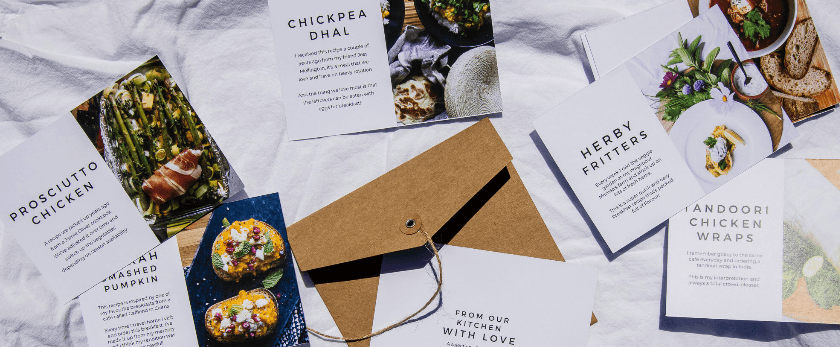In today's fast-paced world, we often rely on convenience and disposable items to make our lives easier. However, these conveniences come at a cost to our planet. From single-use plastics to excessive packaging, our consumption habits are contributing to the growing problem of waste and pollution. But there is a simple solution that can make a big impact – making your own recipe cards.
Not only is making your own recipe cards a fun and creative activity, but it also helps reduce waste and promotes a more sustainable lifestyle. In this article, we will discuss why store-bought recipe cards are bad for the environment, the benefits of making your own, and provide a step-by-step guide on how to make your own recipe cards.
Why Store-Bought Recipe Cards are Bad for the Environment
-
Excessive Packaging: Most store-bought recipe cards come in plastic packaging, which is not biodegradable and ends up in landfills or our oceans. This packaging contributes to the growing problem of plastic pollution, which has devastating effects on our environment and wildlife.
-
Single-Use: Store-bought recipe cards are often designed for one-time use, meaning they are thrown away after being used. This creates unnecessary waste and adds to the already overflowing landfills.
-
Unsustainable Materials: Many store-bought recipe cards are made from unsustainable materials such as paper from old-growth forests or non-recyclable plastic. This not only contributes to deforestation but also adds to the carbon footprint of the production and transportation of these cards.
-
Chemicals and Toxins: The production of store-bought recipe cards often involves the use of chemicals and toxins that are harmful to the environment. These chemicals can also leach into our food when we use the cards to write down recipes, posing a health risk.
Why Making Your Own Recipe Cards is Better for the Environment
-
Reduces Waste: By making your own recipe cards, you are reducing the amount of waste that ends up in landfills. You can reuse the cards multiple times, reducing the need for single-use items.
-
Sustainable Materials: When making your own recipe cards, you have the option to choose sustainable materials such as recycled paper or biodegradable materials. This reduces the environmental impact of your cards and promotes a more sustainable lifestyle.
-
Personalization: Making your own recipe cards allows you to add a personal touch to your collection. You can choose the design, size, and layout that best suits your needs and preferences.
-
Cost-Effective: Making your own recipe cards can save you money in the long run. Instead of constantly buying new cards, you can reuse the ones you have made, reducing the need to purchase more.
What You Will Need
- Recycled paper or cardstock
- Scissors or paper cutter
- Ruler
- Pencil
- Pen or markers
- Optional: Stickers, stamps, or other decorative materials
Directions
-
Measure and Cut: Using a ruler and pencil, measure and mark the desired size of your recipe cards on the recycled paper or cardstock. You can choose any size you prefer, but a standard size is 4x6 inches. Once marked, use scissors or a paper cutter to cut out the cards.
-
Design and Decorate: This is where you can get creative and add a personal touch to your recipe cards. You can use markers, pens, stickers, stamps, or any other decorative materials to design and decorate your cards. You can also add categories or labels to make organizing your recipes easier.
-
Write Down Recipes: Now it's time to write down your favorite recipes on the cards. You can use a pen or marker to write down the ingredients and instructions. You can also add any personal notes or tips to make the recipe your own.
-
Store and Reuse: Once your recipe cards are complete, you can store them in a recipe box or binder for easy access. When you need to use a recipe, simply take out the card, use it, and then store it back for future use. This way, you can reuse the cards multiple times, reducing the need for single-use items.
Conclusion
Making your own recipe cards is a simple and effective way to reduce waste and promote a more sustainable lifestyle. By using sustainable materials and reusing the cards, you are making a positive impact on the environment. So next time you need a recipe card, skip the store-bought ones and make your own. Not only will you be helping the planet, but you will also have a personalized and unique collection of recipe cards. Let's all do our part in creating a greener, more eco-friendly future.










